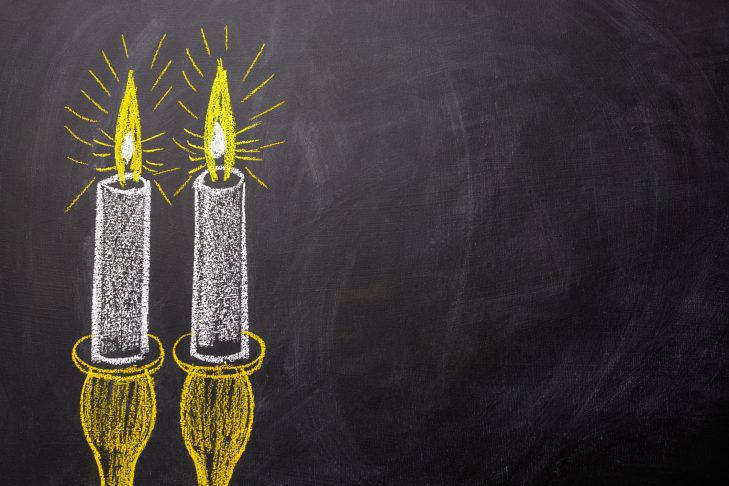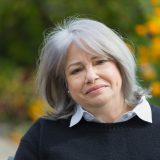There are three consecutive Sabbaths in Jerusalem. On Friday, the muezzin’s ancient doleful call signals to Muslims it is time to pray. On Saturday, Jewish voices gather to sing during Shabbat services. On Sunday, Catholics’ tactile recitations of the rosary harmonize with the tolling of church bells. While Jerusalem is alternately intense, chaotic and occasionally violent, the weekly arrival of the Muslim, Jewish and Christian Sabbaths brings a temporary calm and peace to the city.
The Hebrew name of Jerusalem, Yerushalayim, has a plural suffix. I see the suffix as an embrace of the frequent and tense pluralism inherent in a city that is home to the three Abrahamic religions. These three ancient religions strikingly reside next to each other in Jerusalem’s Old City—0.35 square miles of the most contested real estate on earth. On one of my trips to Jerusalem, my mother, the only Jew in the Catholic school where she taught, asked me to buy a crucifix for a friend who was a nun. As I held the crucifix in my hand, the shop owner told me it was made of the very wood of the cross on which Jesus was crucified. I believed him because such things can happen in Jerusalem.
Praying—fervent, desperate, hopeful—is a serious, all-consuming business in Jerusalem. Whenever I am there, those emotions course through me. In Jerusalem, I’m in awe of the buildings made of Jerusalem stone; stones that are stoic in their solidity and brightness and silence. I am comfortable in this place where amid the weekly frenzy of Friday errands, people exchange Shabbat Shaloms, wishes for a peaceful Sabbath that hang in the air like pennants.
Abraham Joshua Heschel, one the great sages of the 20th century, said Shabbat was a “cathedral in time.” As we enter Shabbat, we are meant to embrace both its serenity and exuberance in prayer and song. But there is melancholy too—lurking between the siren announcing Shabbat and the few seconds before Shabbat wraps Jerusalem in its arms. In this liminal space, I drift into Heschel’s cathedral in time. The Shabbat siren always startles me here in Jerusalem. It feels so contradictory to welcome 24 hours of continuous rest with a gust of shrillness.
On one trip to Jerusalem, I have set the table to welcome Shabbat on my best friend’s terrace in Baka in its weekly transformation as God’s beloved bride. The wine is ready to be blessed. The Shabbat challah is under a resplendent cover, shielded so as not to be upset about the attention the wine will be receiving. The blessing of the wine, the Kiddush, is a sanctification, that will break out in rousing song. The challah is uncovered to receive a brief blessing recited in a minor key, ending with “hamotzi lechem min haaretz—bread brought forth [by God] from the earth.”
This anthropomorphizing of ritual objects exemplifies the Jewish magical realism I love so much. The magic enables me to hear beating hearts within Jerusalem’s luminous stones. It conjures the gritty tears these stones have shed for the violence they have witnessed in Jerusalem over millennia. The late great poet of Jerusalem, Yehuda Amichai, writes: “The air over Jerusalem is saturated with prayers/and dreams/like the air over industrial cities./It’s hard to breathe.” His verses resonate and I visualize Jerusalem’s deferred dreams colliding with unanswered prayers that float in the city’s night sky—dreams floating amid dead stars that still emit light. Those stars stand in as a metaphor for Jewish history.
A woman I once sat next to on a flight home from Israel told me the long-anticipated Jewish Messiah will appear when Jews rebuild the temple. Only one retaining wall stands from the original temple the Romans destroyed in 70 CE. Its 2000-year-old stones, wide and bearded with vegetation, receive notes in their crevices—pleas to God for blessings and miracles. When all that beseeching becomes too much, the notes are swept up and buried as holy texts. Their souls are the prayers that Amichai imagined saturating the Jerusalem skyline.
At Shabbat dinner, my friends ask guests to pull a card from a spiritual Kabbalistic deck, meant to spark conversation, where words like “friendship, nourishment, synthesis and truth” are printed in Hebrew on one side of the card and its English translation on the other. The words are evocative or mournful, consoling or provocative.
My angel card bears the Hebrew word refuah. Even with my fractured Hebrew, I know the word means “healing.” In Hebrew you wish someone who is ill a refuah shelama—a complete recovery. The word lands in my heart as prophetic.
Refuah—how do we heal from antisemitism, terrorism and hate? Am I like the woman on the plane, convinced the Messiah is on the way if only we rebuild the temple? I don’t know. But I’m desperate enough for peace to hope that rebuilding the temple will usher in good will. Will refuah happen as prayers for healing and peace harmonize during Jerusalem’s three Sabbaths? God willing.
This post has been contributed by a third party. The opinions, facts and any media content are presented solely by the author, and JewishBoston assumes no responsibility for them. Want to add your voice to the conversation? Publish your own post here. MORE



